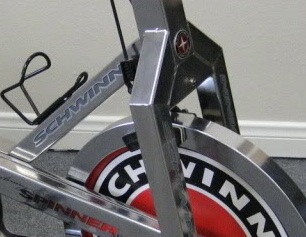We’ve all heard the instructor who calls out to the class, “Gimme a full turn!” or “Add another half turn on this hill.”
Some longtime students, especially those who ride outside, will know to ignore this type of cueing, but the uninitiated student, and those who tend to take every word the instructor says as gospel, may be lost without knowing how many turns to give the resistance knob. But because they aren’t being guided to add resistance based on a set of terrain or cadence criteria, or physical sensations (muscular, cardiovascular, etc) they never learn how to be the driver of their own intensity.
As a result of the misguided cue, they may end up having too little resistance on the flywheel, translating to reduced power output and reduced caloric burn. On the other hand, they may end up with entirely too much resistance, turning it up much farther than they can or should handle. That may result in a knee or back injury due to the heavy strain. Without guidance, they may think that’s the way it’s supposed to feel.
Beginners do not know about resistance knob their first few classes. They may think they should start with the resistance turned all the way to the left, which would be far too little resistance. Even if the instructor says, “Give me two turns,” and they turn the knob twice, they may still be free-wheeling it and not realize it.
This type of cueing for resistance is not an effective way to teach resistance or gear because of the following three facts:


A great and useful article on a very important topic, thank you Jennifer!
To add my own experience, which is about changing from flat road to hill: (and catching the sense of changing “gear” when a climb begins)
During the first climb of the class, I practically always tell my participants to get the sense that they “need to _involve_” muscles in the thigh and gluteus, to “turn them on, make them act”.
This way I indirectly “make” them find a more realistic quantity of resistance (because, as I have seen it so far, it’s really really rare that someone would work with too much resistance, or, to put it in other words, using less resistance than necessary is much more common).
When I was thinking about it later, I had a thought that this might not be the best guidance for those with a lower level of body awareness, but then it somehow turned backwards in my head: this could exactly be one of the ways to train it if necessary. 🙂 And then it is not only a cardio and strength workout that they receive… 🙂
Plus, though most of the people I meet on my classes are not cyclists, I might still be right supposeing that most of them have already ridden a bike at least a few times in their lives. Even if years ago. I tell them to “try to remember how that elevation felt under your legs”… (and then cue them based on this to add more resistance, if necessary). I think this may help some of them as well.
This is one of the few valid reasons why students can insist on riding the same bike in every class. “that’s my bike”. As you ride a meterless bike class after class you become aware of what that opening resistance is by the orientation of the resistance knob. Since I also maintain the bikes at my Y (for this reason) I always let my students know when I have cleaned; lubed or replaced the resistance pads. Good topic to visit Jennifer since not having proper resistance can blow the whole C + R = HR/Power component of the ride.